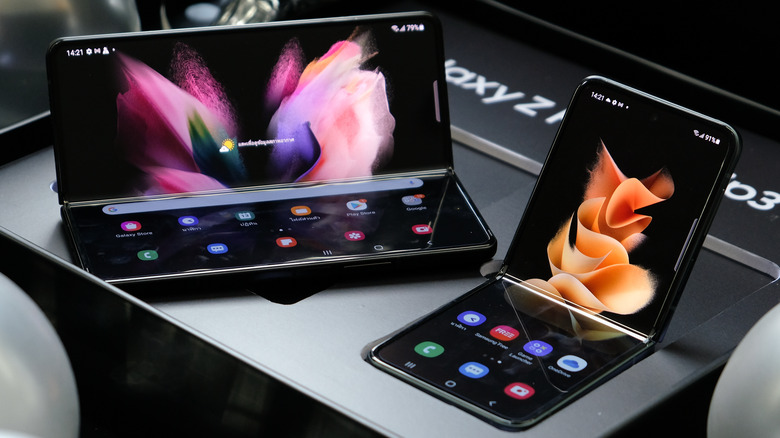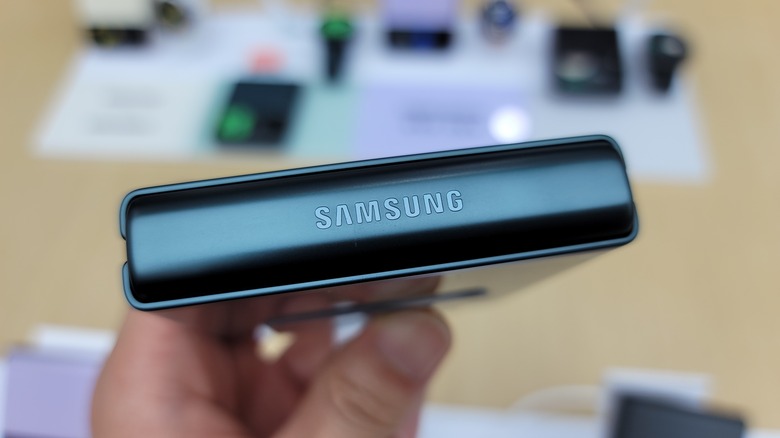Samsung's Foldable Phones Could Get Much Cheaper In The Near Future
Samsung is trying its best to make foldable phones more acceptable to mainstream smartphone users, likely partly to sell its own devices but also to corner the market on foldable displays. The company is making the features of the Galaxy Z Fold series look more desirable while also making the Galaxy Z Flip look and feel like a trendy lifestyle choice. Foldable phones, however, can't really become mainstream until the majority of consumers can afford to buy them, especially considering the durability risks involved. That seems to be Samsung's target for the next two years, and it is reportedly taking steps to create foldable phones that it could sell for half the price of the current Galaxy Z lineup.
The Korean company has been working on foldable displays and devices for almost a decade now and is naturally quite invested in this technology. Samsung's display-making business, in particular, seems to have hedged its bets on foldable panels — almost to the exclusion of others — to the point that it is letting competitor LG take the lead in rollable displays instead. Samsung Display is, for example, the rumored supplier of Apple's first anticipated foldable device, which is sure to raise its profile and profits exponentially.
This would only work, however, if foldable phones become more common, which, in turn, depends on making these usually expensive devices more affordable to the masses. Given the costs involved in making the flexible panels themselves, it seems Samsung may be cutting corners in other aspects of the phone, using a strategy similar to its Galaxy A series of mid-range phones.
Samsung's Galaxy smartphones from A to Z
During the restructuring of its smartphone branding scheme, Samsung adopted the A letter for its mid-range phones, reserving M for entry-level devices (spoiler: the three phone families now spell S, A, M). The Galaxy A series usually has some resemblance to flagship Galaxy S phones, particularly in design, but often skimps out on other hardware components like the processor, memory, and cameras. According to an insider source (via ETnews), Samsung will be using the same tactic to bring down its foldable prices to a more agreeable level.
The report doesn't say which corners will allegedly be cut to reach that lower price point, though it does mention only having core functions installed. If there is one thing that Samsung can't skimp on, however, it is the durability of the foldable phone and the materials it will use. If a cheap foldable phone with an already fragile display is easily damaged, it will only serve to scare potential buyers away rather than increase confidence in the product line.
Samsung will reportedly target a price of 1 million KRW, which is roughly $770 USD and therefore considerably cheaper than even the Galaxy Z Flip 3 model's price tag. This won't be happening anytime soon, though, as the pieces are unlikely to fall into place until 2024 — presumably when foldable displays themselves have become less expensive to make. Samsung's timeline might also be influenced by Apple's foldable plans, as the Korean company will most likely want to have its brand well-established in that market before the first foldable iPhone or iPad launch.

